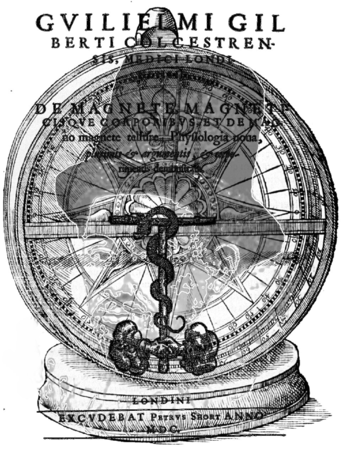William Gilbert1544–1603
Neuroscience was transformed by electricity but the current coursed slowly from its attractive source, magnetism. Gilbert carried out some of the first systematic studies of the lodestone and distinguished its properties from those of producing the attractive effect by friction with amber. In so doing he introduced the term that was to become electricity. Gilbert received his medical training in Cambridge and practiced as a physician in London. He became president of the College of Physicians and was physician to Queen Elizabeth I. He rejected the Scholastics’ approach to science, prferring the experimental method, which he applied to the earth’s magnetic properties. His concerns with electricity and magnetism were directed more towards cosmology rather than medicine, but he did muse about the medicinal virtues of loadstone: “There are many varieties of loadstone produced by differences in the mingling of earths, metals, and juices; hence they are altogether unlike in their virtues and effects, due to propinquities of places and of agnate bodies, and arising from the pits themselves as it were from the matrices being soul. One loadstone is therefore able to purge the stomach, and another to check purging, to cause by its fumes a serious shock to the mind, to produce a gnawing at the vitals, or to bring on a grave relapse; in case of which ills they exhibit gold and emerald, using an abominable imposture for lucre. Pure loadstone may, indeed, be not only harmless, but even able to correct an over-fluid and putrescent state of the bowels and bring them back to a better temperament”. Magnetism was to cast its subtle influence on the nervous system in the eighteenth century. This was displayed both through the animal magnetism of Mesmer and the electric fluid of Galvani. Gilbert’s portrait is combined with the title page of his De Magnete (1600) and an early model of a compass.
